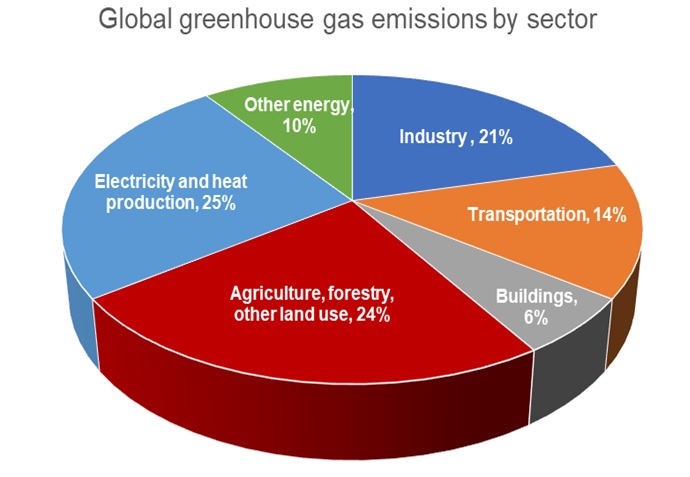What is Carbon Farming?
Climate change is a major global challenge that requires urgent action to mitigate its negative impacts. One way in which individuals and organizations can help to reduce the emission of greenhouse gases and slow the pace of climate change is by adopting climate-friendly practices. Carbon farming is one such practice that has the potential to not only combat climate change, but also improve soil health and fertility and provide economic benefits for farmers.
Greenhouse gases emissions and global warming
Climate change is a major global issue that has caused numerous natural disasters, including global warming. The concentration of greenhouse gases in the atmosphere is 30% higher than it was 150 years ago, which is causing the atmosphere to warm significantly more than before. Greenhouse gases absorb some of the sun’s heat energy and prevent heat from escaping the atmosphere.
Human activities such as farming, deforestation, and the burning of fossil fuels contribute to global warming by releasing excess carbon dioxide (CO2) and other greenhouse gasses, such as nitrous oxide (N2O) and methane (CH4) into the atmosphere. According to the IPCC (Intergovernmental Panel on Climate Change), agriculture, forestry, and other land uses account for 24% of the global greenhouse gas emissions. More than the emissions attributed to industry (21%) and transportation (14%).
As the world’s human population grows, farmers have to adopt new, intensive practices to meet the rising demand for food, such as intensified fertilizer and pesticide applications. Unfortunately, most of these practices aren’t eco-friendly and continually overstretch natural resources. This has resulted in increased emissions of greenhouse gases and contribute to climate change.
What is carbon farming?
Carbon farming is a set of techniques used to alter agricultural operations or land use, in order to remove CO2 from the atmosphere, minimize greenhouse gas emissions, and increase the amount of carbon stored in soil and plants. This process is also referred to as carbon sequestration.
The techniques involved in carbon farming include:
- No-till or conservation tillage farming
- Cover crops
- Mulching
- Crop rotation
- Integrated nutrient management
- Integrated pest management
- Precision irrigation techniques, avoiding surface flood irrigation
- Restoration of degraded soils
One of the major causes of soil degeneration is soil tilling. Tillage disrupts soil structure and makes the soil more prone to erosion. Bare soil, deprived of the of organic matter, is prone to erosion by water or wind. This results in loss of nutrients and organic matter.
According to the FAO, an average of 20 tonnes per hectare of soil are lost annually due to tillage and water erosion. Moreover, tillage displaces and alters microbial communities in the soil and reduces their diversity.
No-till practices have the benefit of conserving soil fertility and structure, minimizing erosion:
- Soil structure is maintained, and crop residues remain on the soil surface to protect it.
- The enhanced soil structure and cover increases the soil’s capability to hold water, which eventually minimizes soil degradation and runoff, and stops pollution from extending to the nearby water bodies.
- No-till results in reduced evaporation, increased rainwater absorption, and increased irrigation effectiveness, leading to higher productivity, particularly in arid and semi-arid areas.
- No-till maintains microbial diversity. Recent research suggests that changes in the diversity of microbial communities in soil affect the capacity of the in soil to sequester carbon.
Additional soil conservation methods, such as crop rotation and planting cover crops, are used to improve soil structure, avoid diseases, and enhance soil fertility.
How is carbon farming beneficial to farmers?
Carbon farming is beneficial to landowners and farmers, as it improves soil health and productivity.
Another way in which carbon farming can pay off to the farmer is the carbon credits. Emerging national and private carbon offset programs allow farmers to sell carbon credits to corporations belonging to different industries and get paid for the credits sold. The buyer is often a corporate in need to offset its carbon footprint, whether voluntarily or in order to comply with regulatory requirements.




